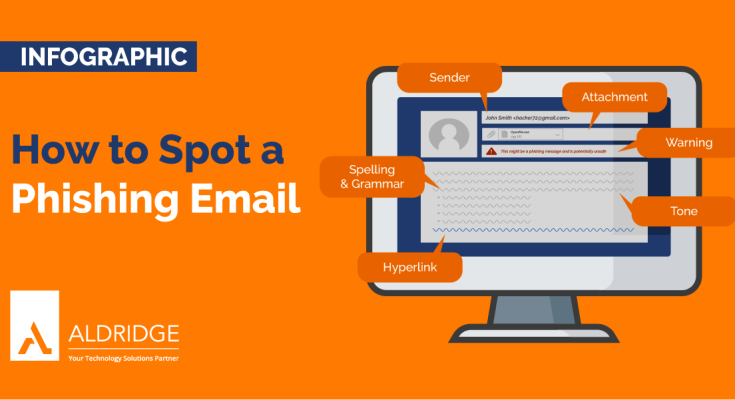Phishing emails are one of the most common and dangerous cyber threats today. They are designed to trick recipients into revealing sensitive information like passwords, credit card numbers, or other personal details, often leading to identity theft, financial loss, or unauthorized access to accounts. Because phishing tactics are constantly evolving, it’s crucial to be able to identify these malicious emails quickly—sometimes in just seconds.
This article will guide you through the essential signs to watch for so you can spot a phishing email instantly and protect yourself from falling victim.
What Is a Phishing Email?
Phishing emails are fraudulent messages that impersonate legitimate organizations, companies, or even colleagues to deceive recipients. The goal is to lure you into clicking malicious links, downloading infected attachments, or submitting confidential information on fake websites.
These emails often create a sense of urgency or fear, urging immediate action, which makes it harder for recipients to pause and verify authenticity.
Key Signs to Spot a Phishing Email Fast
1. Check the Sender’s Email Address Carefully
One of the quickest ways to spot phishing is by examining the sender’s email address closely. Phishers often use addresses that look similar to legitimate ones but contain subtle typos, extra characters, or suspicious domains. For example, an email from [email protected] (with a number “1” instead of an “l”) instead of [email protected] is a red flag.
Also, be wary of emails from free webmail services (like Gmail or Yahoo) claiming to represent established companies or institutions.
2. Look Out for Generic Greetings
Legitimate companies usually address you by your full name or username, especially in official communications. Phishing emails often start with generic greetings like “Dear Customer,” “Dear User,” or “Dear Sir/Madam.” While this alone isn’t a guarantee of phishing, it’s a suspicious sign that should prompt further scrutiny.
3. Beware of Urgency and Threatening Language
Phishing emails often pressure you to act quickly by creating a sense of urgency or fear. Phrases like “Your account will be suspended,” “Immediate action required,” or “You’ve won a prize, claim now!” are common tactics to rush you into clicking links or providing information without thinking.
Take a moment to assess whether the email truly demands urgent attention or if it’s trying to manipulate your emotions.
4. Check for Spelling and Grammar Errors
Many phishing emails contain noticeable spelling mistakes, awkward phrasing, or poor grammar. While not all phishing emails are poorly written, these errors can be a telltale sign that the message isn’t from a professional organization.
5. Hover Over Links Without Clicking
Hover your mouse over any links in the email (without clicking!) to reveal the actual URL. Phishing emails often disguise malicious links with text that looks legitimate. For example, a link might say “www.bankofamerica.com” but actually point to a suspicious URL like “http://malicious-site.com/login.”
If the URL looks unfamiliar, misspelled, or doesn’t match the company’s official website, don’t click.
6. Be Wary of Unexpected Attachments
Phishing emails sometimes include attachments that contain malware or viruses. If you receive an unexpected attachment, especially with file types like .exe, .zip, .scr, or .js, be cautious.
Do not open attachments from unknown or suspicious sources. When in doubt, verify with the sender through another channel.
7. Analyze the Email Content for Requests of Sensitive Information
Reputable companies rarely ask for sensitive information like passwords, Social Security numbers, or credit card details via email. If the message requests such data, it’s likely a phishing attempt.
Always verify requests by contacting the organization directly through official customer service numbers or websites.
8. Check the Email’s Formatting and Branding
Phishing emails may poorly replicate logos, colors, or formatting. Look for inconsistencies such as blurry logos, incorrect fonts, or unusual layouts. Legitimate companies invest in professional design, and mistakes in branding could indicate a fake email.
What To Do If You Suspect a Phishing Email
-
Do not click any links or open attachments. These could install malware or lead you to fraudulent websites.
-
Report the email to your IT department or email provider. Most email services have options to mark emails as phishing.
-
Delete the email from your inbox and trash folder. This reduces the risk of accidentally interacting with it later.
-
If you’ve clicked a suspicious link or submitted information, change your passwords immediately and monitor your accounts for unusual activity.
Additional Tips to Protect Yourself
-
Use email filters and anti-phishing tools. Many email platforms offer built-in protection that automatically flags suspicious messages.
-
Keep your software and antivirus updated. This helps detect and block malicious content.
-
Enable two-factor authentication (2FA). Even if your password is compromised, 2FA can prevent unauthorized access.
-
Stay informed about the latest phishing tactics. Cybercriminals constantly adapt, so ongoing awareness is critical.
Conclusion
Phishing emails are designed to deceive and exploit, but with vigilance and a few quick checks, you can spot them in seconds. Paying close attention to the sender’s address, greetings, language, links, and attachments is essential to safeguarding your personal and professional information.
By cultivating a habit of careful email scrutiny and following security best practices, you reduce the chances of falling victim to phishing scams and strengthen your overall cyber defense.
Remember: when it comes to suspicious emails, trust your instincts—if something feels off, it probably is.




